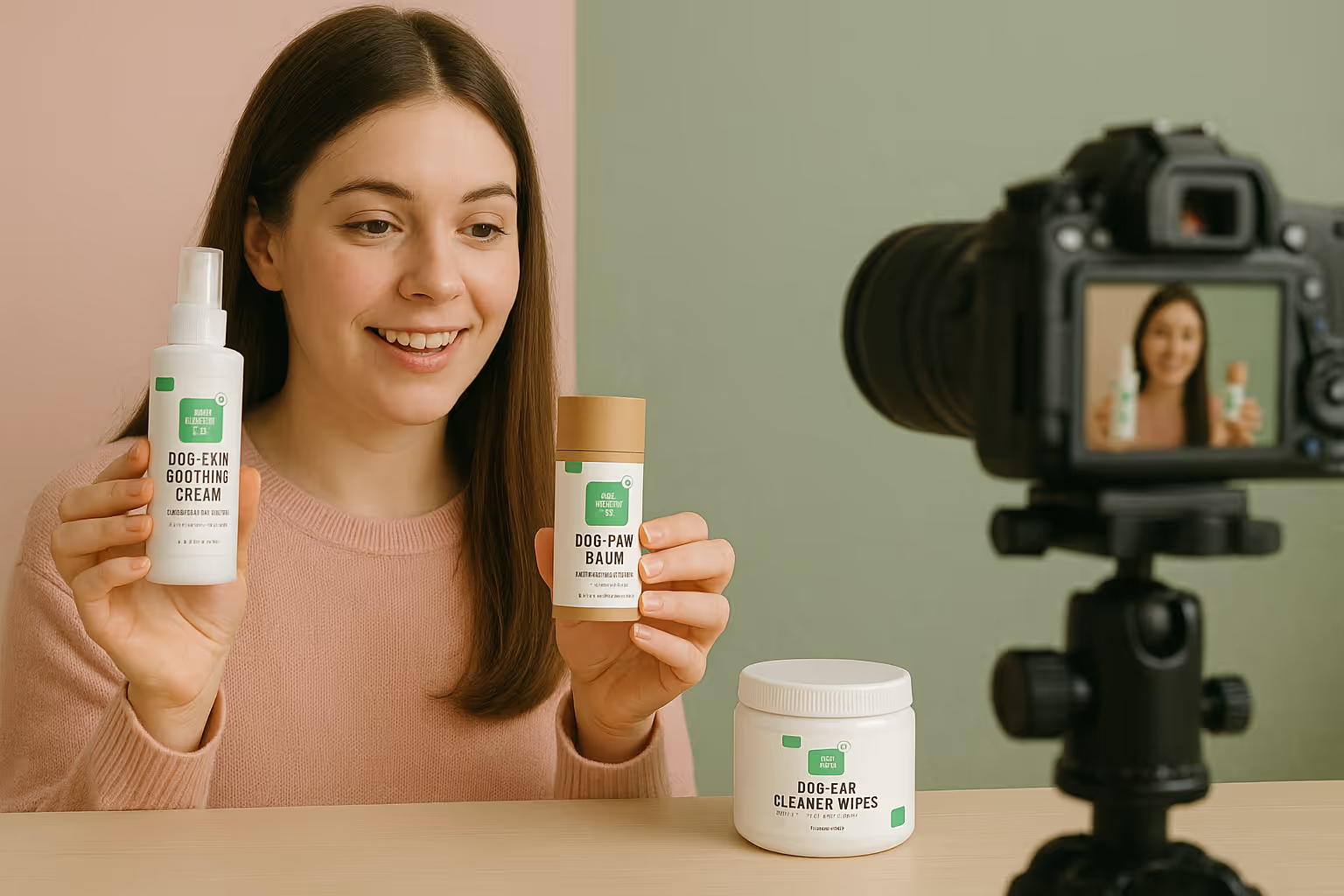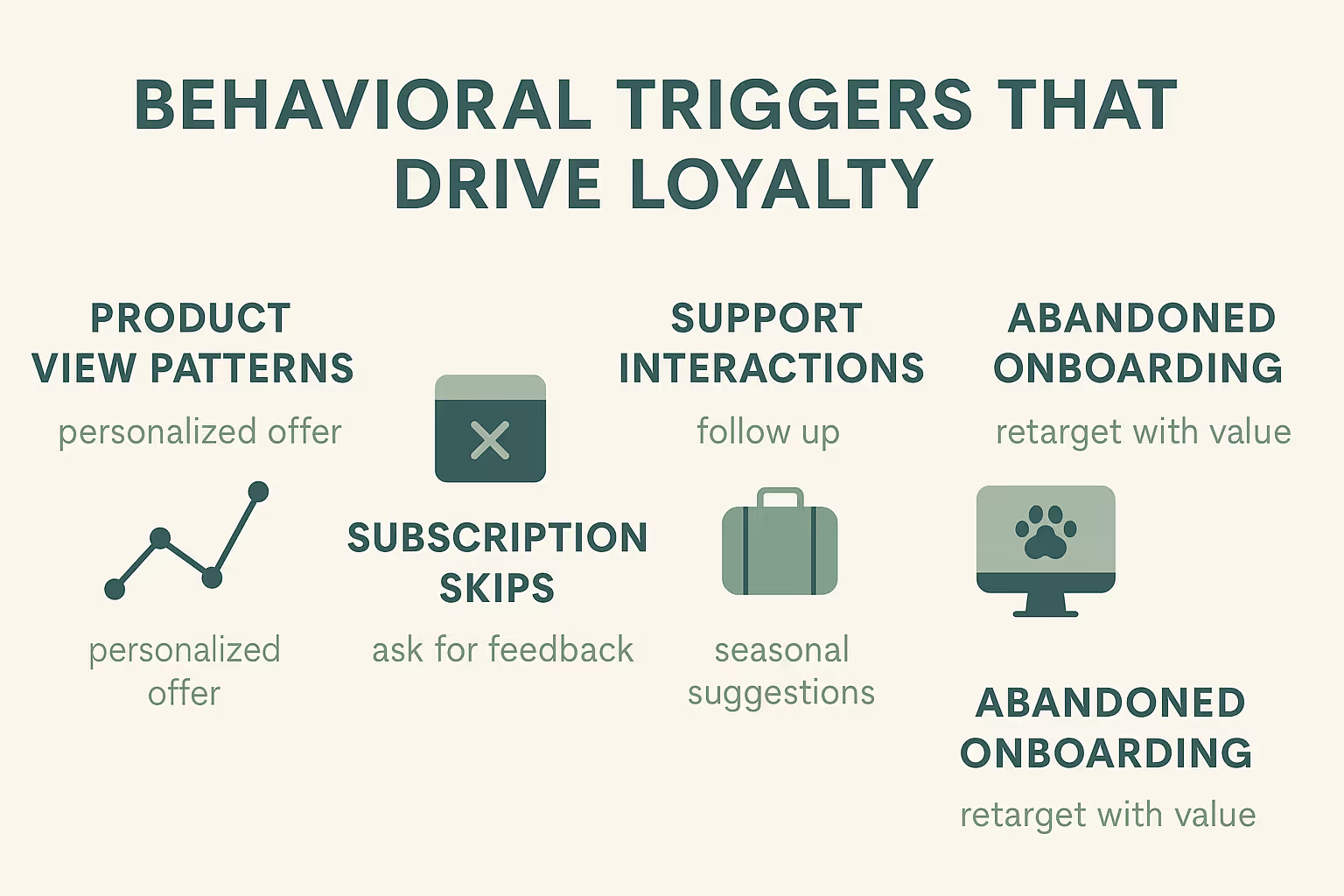How Do Pet Brands Reduce Churn With Personalized Subscriptions? Key Strategies

The pet industry hit $136.8 billion in U.S. spending in 2022 and continues its rapid growth. Today’s pet parents expect premium, personalized care.
With rising competition, customer retention is more important than ever. Personalized subscription models help pet brands reduce churn and strengthen loyalty.
It’s important to know how pet brands reduce churn with personalized subscriptions. It reveals powerful strategies behind retention, satisfaction, and long-term growth.
Key Strategies for Personalizing Pet Subscriptions to Reduce Churn
Leading pet brands implement several effective approaches to personalize their subscription offerings:
Detailed Pet Profiles as the Foundation
Successful personalization begins with comprehensive pet profiles that capture essential information:
- Species, breed, age, weight, and size
- Health conditions or special needs
- Dietary restrictions or preferences
- Activity level and lifestyle
- Behavioral tendencies
These profiles enable brands to recommend appropriate products and create truly tailored experiences.
For example, a subscription for an active young Labrador would differ significantly from one designed for a senior cat with kidney issues.
The most effective pet brands make profile creation simple yet thorough, often using engaging quizzes or questionnaires that feel more like a conversation than a form. They also prompt regular updates as pets age or their needs change.
Smart Product Recommendations Based on Data
Once pet profiles are established, brands can leverage this data to provide personalized product recommendations that evolve with the pet's life stages:
- Age-appropriate nutrition as pets grow from puppies/kittens to adults to seniors
- Breed-specific products addressing common health concerns
- Seasonal recommendations (flea/tick prevention in summer, joint supplements in winter)
- Complementary products based on previous purchases
Private label pet products allow brands to create custom supplement formulations tailored to specific pet needs, creating even more personalization opportunities. This level of customization helps brands stand out in a crowded market.
Flexible Subscription Management
Pet owners value control over their subscriptions. The most successful brands offer:
- Adjustable delivery frequencies (every 2 weeks, monthly, bi-monthly)
- Easy pause, skip, or reschedule options
- Ability to modify product quantities or formulations
- Seamless product swapping capabilities
- No-hassle cancellation processes
This flexibility shows respect for customers' changing needs and builds trust. Brands that make subscription management difficult often see higher churn rates as frustrated customers leave entirely rather than navigate complicated processes to make simple changes.
Personalized Unboxing Experiences
The physical delivery experience provides another opportunity for meaningful personalization:
- Custom packaging with the pet's name
- Handwritten notes addressing specific pet needs
- Surprise treats or toys based on pet preferences
- Seasonal or birthday-themed boxes
- Educational materials tailored to the pet's life stage
These thoughtful touches transform a routine delivery into an emotional experience that strengthens the bond between brand and customer. They also create shareable moments that drive organic social media exposure
Pet brands that win loyalty aren’t just selling food or toys; they’re delivering experiences that feel tailored to each furry companion. When the product feels right, the timing feels spot on, and the unboxing brings a smile, customers stick around.
Advanced Personalization Tactics That Reduce Churn

Beyond basic personalization, innovative pet brands implement these advanced strategies to further reduce churn:
Predictive Replenishment and AI-Driven Recommendations
Leading subscription services use artificial intelligence to predict when customers will need refills based on:
- Past consumption patterns
- Pet size and activity level
- Seasonal factors
- Product shelf life
This technology enables brands to suggest replenishment before customers realize they need it, reducing the chance they'll make one-off purchases from competitors when they run out unexpectedly.
Proactive Health Monitoring Integration
Some forward-thinking pet brands integrate with health monitoring tools or veterinary services to create truly personalized wellness subscriptions:
- Activity tracker data influencing nutritional recommendations
- Veterinary records informing supplement suggestions
- Weight monitoring triggering diet adjustments
- Seasonal health risk alerts with relevant product offerings
This holistic approach positions the brand as a comprehensive pet wellness partner rather than just a product provider, significantly increasing switching costs for customers considering alternatives.
Community Building Around Pet Types
Creating communities around specific pet types or needs builds powerful social connections that reduce churn:
- Breed-specific content and product bundles
- Special needs support groups with tailored subscriptions
- Age-based cohorts receiving synchronized life stage products
- Activity-level matching (e.g., "active retriever" subscription group)
When customers feel part of a community that understands their pet's specific needs, they become less likely to leave. This strategy works particularly well for specialized pet supplement brands targeting specific pet health concerns.
Measuring Success: Key Metrics for Personalized Pet Subscriptions
To effectively evaluate personalization efforts, pet brands should track these critical metrics:
Beyond Basic Retention Rate
While the overall retention rate provides a big-picture view, sophisticated brands dig deeper:
- Cohort analysis by pet type, age, and subscription length
- Churn timing patterns (e.g., after first delivery, at 3 months, at price increases)
- Reactivation rates for paused or canceled subscriptions
- Retention variance between personalized vs. standard subscription tracks
These detailed metrics reveal which personalization elements drive the most loyalty and where improvements could have the greatest impact.
Customer Lifetime Value (CLV) by Personalization Level
Measuring CLV differences between customers with varying degrees of personalization helps quantify the ROI of personalization efforts:
- Basic subscribers vs. fully personalized subscribers
- CLV impact of each personalization feature
- Spending patterns beyond subscription products
- Referral value from highly personalized subscribers
Pet brands often discover that highly personalized subscribers not only stay longer but also spend more on add-ons and premium products, significantly increasing customer lifetime value.
Net Promoter Score (NPS) and Satisfaction Metrics
Satisfaction metrics provide leading indicators of potential churn:
- NPS scores compared across personalization segments
- Satisfaction ratings after subscription modifications
- Feedback specific to personalization elements
- Social sharing and recommendation rates
Brands should establish regular feedback loops that specifically assess the value customers place on personalized elements, allowing for continuous refinement.

Common Challenges and How to Overcome Them
Implementing personalized pet subscriptions comes with several challenges:
Data Collection Without Overwhelming Customers
- Challenge: Gathering enough information for meaningful personalization without creating friction during signup.
- Solution: Implement progressive profiling, collect basic information upfront, then gradually gather more details through follow-up communications, behavior tracking, and occasional micro-surveys. Make each data request beneficial to the pet owner.
Balancing Automation with Human Touch
- Challenge: Creating personalization that feels authentic rather than algorithmically generated.
- Solution: Combine automated systems with strategic human touchpoints. For example, use automation for timing and product selection, but have team members add personal notes or review unusual situations. Authenticity matters enormously in the emotionally driven pet market.
Managing Inventory for Personalized Offerings
- Challenge: Maintaining appropriate stock levels for numerous personalized product combinations.
- Solution: Partner with fulfillment specialists who understand subscription dynamics. A fulfillment solution offers pet brands the flexibility to create personalized product combinations without managing complex inventory systems themselves.
Real-World Success Stories: Brands Getting It Right
These brands show how loyalty done right turns customers into lifelong fans. Here’s how a few standout names are winning over customers and keeping them for the long haul.
Case Study: BarkBox's Breed-Specific Approach
BarkBox built its subscription model around detailed pet profiles that capture breed, size, and play style. Their success comes from:
- Tailoring toy durability to chewing strength
- Customizing treat ingredients for common breed sensitivities
- Creating themed boxes that resonate with specific dog types
- Providing replacement items when a product doesn't match a dog's preferences
This personalization strategy has helped them maintain retention rates above industry standards, with over 600,000 active subscribers.
Case Study: The Farmer's Dog's Health-Focused Personalization
The Farmer's Dog revolutionized the pet food subscription market by:
- Creating precisely portioned meals based on detailed health profiles
- Adjusting formulations as pets age or their health needs change
- Providing personalized feeding guidelines with each delivery
- Offering direct consultation with nutrition experts for complex cases
Their retention rates significantly outperform traditional pet food brands, demonstrating the power of health-focused personalization.
Pro Tip: The most successful pet subscription brands create "micro-moments" of personalization that surprise and delight customers throughout their journey, not just at checkout or delivery.
Consider unexpected touches like sending a personalized birthday message to the pet (not just the owner) or adjusting recommendations based on seasonal changes in the customer's region.

Implementing Your Personalized Pet Subscription Strategy
Ready to reduce churn with a personalized subscription approach? Follow these steps:
- Start with customer research: Understand what personalization elements your specific customers value most.
- Build comprehensive pet profiles: Design a data collection strategy that gathers essential information without overwhelming new customers.
- Create clear value tiers: Develop subscription options with different personalization levels, demonstrating increased value at each tier.
- Select the right technology: Choose subscription management platforms that support complex personalization rules and flexible customer controls.
- Train your team: Ensure customer service representatives understand the personalization system and can make meaningful adjustments for customers.
- Implement gradual rollout: Test personalization features with a segment of your audience before full implementation.
- Establish feedback loops: Create regular opportunities for customers to provide input on personalization effectiveness.
Lessons from the Field: Using Behavioral Triggers to Deepen Loyalty

Most brands stop at pet profiles and order history. But the real opportunity lies in behavioral data; what customers do between purchases.
Top-performing brands build loyalty by responding to live intent signals across the buyer journey. Here’s how:
1. Product View Patterns → Intent Signals
- Example: A customer views calming treats or anxiety chews multiple times without purchasing.
- Action: Trigger a personalized bundle discount or trust-building UGC email (e.g., “Here’s what other anxious pups loved”).
Why it works: Anticipates a need without pressure, nudging the customer at the right moment.
2. Subscription Skips → Anticipate Churn
- Example: Skipping multiple months or changing delivery dates frequently.
- Action: Ask for feedback before they cancel. Offer lower frequency, alternate products, or “pause without penalty” options.
Why it works: Shows flexibility and saves the relationship without pushing more sales.
3. Support Interactions → Loyalty Moments
- Example: A customer contacts support about digestive issues after using a product.
- Action: Follow up with personalized product education, a relevant recommendation (e.g., sensitive formula), or a care-based discount.
Why it works: Turns a potential negative into a high-retention moment.
4. Holiday Timing → Smart Seasonal Suggestions
- Example: Pauses around travel seasons or major holidays.
- Action: Trigger reminders about travel-sized SKUs, pet sitters, or seasonal health products (like paw balm in winter).
Why it works: Makes your brand feel like a helpful companion, not just a seller.
5. Abandoned Quiz or Onboarding → Retarget with Value
- Example: A new customer starts but doesn’t complete a pet profile or quiz.
- Action: Send a dynamic email showing a preview of what they’ll unlock: tailored product plans, exclusive first-order offers, pet birthday perks, etc.
Why it works: Removes friction by showing instant value and reminding them what they’re missing.
Keep Pet Parents Coming Back for More
Pet brands have an unprecedented opportunity to reduce churn through personalized subscription experiences that speak directly to pet owners' deepest concerns: providing optimal care for their beloved companions.
The emotional connection between pets and their owners creates fertile ground for subscription models that deliver convenience, consistency, and customization.
The most successful pet brands recognize that personalization isn't just a marketing tactic; it's a comprehensive approach to building lasting relationships.
By understanding each pet's unique needs and preferences, brands can create subscription experiences that customers genuinely value and are reluctant to abandon.
FAQ
Related blogs

Influencer Pricing Calculator: Find Your Fair Rate for Posts, Reels & Stories
.avif)
How To Market Pet Products Through Storytelling: Win Attention, Build Trust, and Boost Sales Naturally
.avif)
How To Market Coffee To Gen Z: The High-Impact Blueprint Every Brand Needs
.avif)

